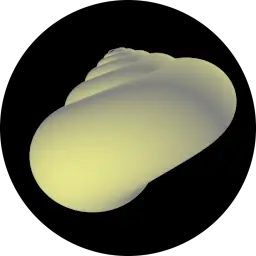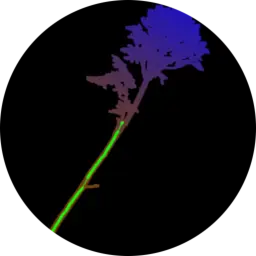- Filin I. 2015. The relation between maternal phenotype and offspring size, explained by overhead material costs of reproduction. Journal of Theoretical Biology 364: 168-178.
PDF
- Dorchin A, Filin I, Izhaki, I, Dafni A. 2013. Movement patterns of solitary bees in a threatened fragmented habitat. Apidologie 44: 90-99.
PDF
Supplemental
In this study I applied a maximum-likelihood
statistical model in order to estimate movement
patterns of solitary bees from mark-recapture
data.
- Holt RD, Barfield M, Filin I, Forde S. 2011. Predation and the evolutionary dynamics of species ranges. American Naturalist 178(4): 488-500.
PDF
Supplemental
- Filin I. 2010. Target size and optimal life history when individual growth and energy budget are stochastic. Journal of Theoretical Biology 264: 510-516.
PDF
Supplemental
- Filin I. 2009. A diffusion-based approach to stochastic individual growth and energy budget, with consequences to life-history optimization and population dynamics. Journal of Evolutionary Biology 22: 1252-1267.
PDF
I combined theoretical models and results from
stochastic processes with dynamic optimization
techniques in order to study optimal life-history
strategies, such as optimal growth trajectories,
optimal size at maturity, and optimal offspring size.
- Scharf, I, Filin, I, Subach, A, Ovadia, O 2009. A morphological and life history comparison between desert populations of a sit-and-pursue antlion, in reference to a co-occurring pit-building antlion. Naturwissenschaften 96: 1147-1156.
- Scharf I, Filin I, Ovadia O. 2009. A trade-off between growth and starvation endurance in a pit-building antlion. Oecologia 160: 453-460.
- Scharf I, Filin I, Ben-Yehoshua D, Ovadia O. 2009. Phenotypic variation and plasticity in antlion populations: effect of climate on adult body size and wing loading. Zoology 112(2): 139-150.
- Filin I, Schmitz OJ, Ovadia O. 2008. Consequences of individual size variation on the survival of an insect herbivore: An analytical model and an experimental field testing using the Red-legged Grasshopper. Journal of Orthoptera Research 17(2): 283-291. [Invited paper; Special issue on body size.]
PDF
- Filin I, Holt RD, Barfield M. 2008. The relation of density regulation to habitat specialization, evolution of a species range, and the dynamics of biological invasions. American Naturalist 172(2): 233-247.
PDF
Supplemental
- Scharf I, Filin I, Golan M, Buchstav M, Subach A, Ovadia O. 2008. A comparison between desert and Mediterranean antlion populations: differences in life history and morphology. Journal of Evolutionary Biology 21: 162-172.
PDF
I applied principal
component analysis and canonical discriminant
analysis to find the morphological traits that best
distinguish between the three developmental stages of
antlion larvae. Additionally, I applied regression
techniques to model larval growth, and Failure-Time
Analysis to estimate rates of mortality and
developmental transitions (such as molting, pupation
and emergence), and how such rates vary with larval stage,
body size, and population of origin.
- Scharf I, Filin I, Ovadia O. 2008. An experimental design and a statistical analysis separating interference from exploitation competition. Population Ecology 50(3): 319-324.
- Filin I. 2007. Aspects of the reciprocal relationship between the dynamics of a quantitative trait and its variation, and the dynamics of species ranges and biological invasions. Ben-Gurion University of the Negev. [PhD thesis / dissertation]. DOI 10.5281/zenodo.16050866, Permalink on BGU library
- Filin I, Ovadia O. 2007. Individual size variation and population stability in a seasonal environment: a discrete-time model and its calibration using grasshoppers. American Naturalist 170(5): 719-733.
PDF
Supplemental
I used data
on growth, development and survival of North American
grasshoppers, in order to find how individual
variation in such life-history traits affects overall population dynamics
and stability. I applied regression and Failure-time
analysis techniques in the statistical analysis.
Additionally, I applied models for stochastic
population dynamics in order to estimate effects on
population stability.
- Filin I, Ziv Y. 2004. New theory of insular evolution: unifying the loss of dispersability and body-mass change. Evolutionary Ecology Research 6:115-124.
PDF
















